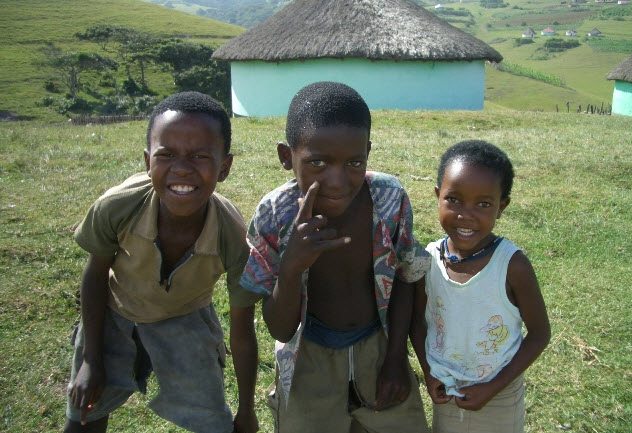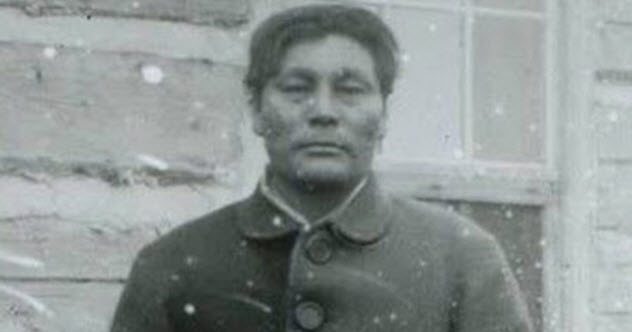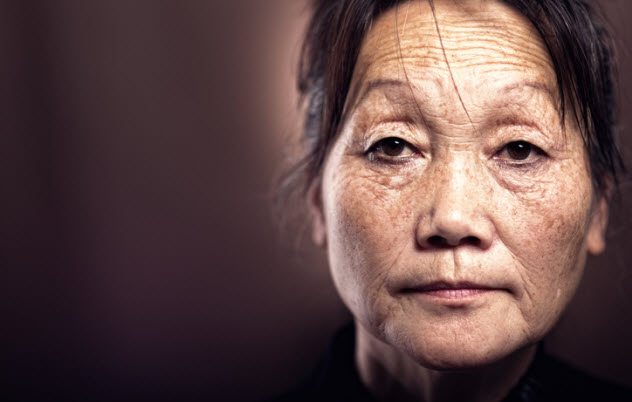 Movies and TV
Movies and TV  Movies and TV
Movies and TV  Creepy
Creepy 10 Lesser-Known Shapeshifter Legends from Around the World
 Animals
Animals 10 Amazing Animal Tales from the Ancient World
 Gaming
Gaming 10 Game Characters Everyone Hated Playing
 Books
Books 10 Famous Writers Who Were Hypocritical
 Humans
Humans 10 of the World’s Toughest Puzzles Solved in Record Time
 Mysteries
Mysteries 10 Scientific Mysteries We Don’t Fully Understand
 Weird Stuff
Weird Stuff 10 Celebrities Who Have Admitted to Alien Encounters
 Our World
Our World 10 Surprising Secrets of Notre Dame Cathedral
 Miscellaneous
Miscellaneous 10 Intriguing Origins of Popular Carnival Rides
 Movies and TV
Movies and TV 10 Actors Dragged out of Retirement for One Key Role
 Creepy
Creepy 10 Lesser-Known Shapeshifter Legends from Around the World
 Animals
Animals 10 Amazing Animal Tales from the Ancient World
Who's Behind Listverse?

Jamie Frater
Head Editor
Jamie founded Listverse due to an insatiable desire to share fascinating, obscure, and bizarre facts. He has been a guest speaker on numerous national radio and television stations and is a five time published author.
More About Us Gaming
Gaming 10 Game Characters Everyone Hated Playing
 Books
Books 10 Famous Writers Who Were Hypocritical
 Humans
Humans 10 of the World’s Toughest Puzzles Solved in Record Time
 Mysteries
Mysteries 10 Scientific Mysteries We Don’t Fully Understand
 Weird Stuff
Weird Stuff 10 Celebrities Who Have Admitted to Alien Encounters
 Our World
Our World 10 Surprising Secrets of Notre Dame Cathedral
 Miscellaneous
Miscellaneous 10 Intriguing Origins of Popular Carnival Rides
Top 10 Culture-Specific Illnesses And Mental Disorders
Most media attention focuses on illnesses that affect large swaths of people—the epidemics and pandemics. But, as strange as it sounds, there are certain ailments and mental disorders that only affect members of a particular tribe or region.
Even in Western medicine, many of these illnesses and disorders lack any tangible cause, explanation, or treatment. Most of the affected tribesmen attribute these ailments to a spirit, curse, or witch.
10 Uppgivenhetssyndrom

Uppgivenhetssyndrom is a bizarre illness that only affects refugee children from former Soviet or Yugoslav states who now live in Sweden. The children suddenly develop the illness whenever they realize that their family is about to be deported to their original country. The kids exhibit coma-like symptoms and refuse to move, talk, or eat. They just remain in their beds as if they were dead.
In a well-documented case, one of two sisters from Kosovo lost her ability to walk a day after hearing that her family was about to be deported. The other sister soon joined her, and they remained in the coma-like state for two years. Children in this condition only return to their normal selves when the Swedish government reverses the deportation notice and allows their family to stay in the country. Even so, the children take months to recover.
In another well-documented case, a boy spent three extra months in bed after his family had a deportation notice reversed and was granted a residency permit. He opened his eyes and sat up but needed support to straighten his head.[1]
9 Amafufunyana

Amafufunyana is a disease unique to the Zulus and the Xhosas of South Africa. It often involves a person’s stomach speaking a language that the person doesn’t understand.
Among the Xhosas, for instance, there are claims that the stomach speaks Zulu. The stomach also delivers threats and dishes out orders to the victim. One woman’s stomach told her that she would never have a child. It also threatened to afflict her with seizures and kill her. Another girl was told to jump in front of a moving car.
Sufferers often experience nightmares, fatigue, and sleep difficulties. They also become angry, highly agitated, and prone to suicide. Sometimes, they even start talking in another voice.
Native healers believe that the disease is the result of a curse. The person responsible for the curse supposedly takes ants from a dead person’s grave, makes it into poison, and feeds it to the would-be victim. Once eaten, the victim begins to hear his stomach talking.
Between 1981 and 1983, amafufunyana affected over 400 schoolchildren in South Africa. The pupils suffered swollen stomachs and started running about, kicking chairs and desks. Their stomachs reportedly spoke Zulu, saying they were sent to possess the children.[2]
Three women were blamed for the incident. Two fled, but the last was caught and almost killed by the angry children. The children were arrested and charged with assault. But they behaved so erratically in court that the case was adjourned five times.
8 Running Amok

In English, the phrase “(to) run amok” refers to the act of behaving in a wild and unruly manner. Or rather, it means “to go crazy.” The phrase is actually from “running amok,” an illness peculiar to the natives of Malaysia, Puerto Rico, and the Philippines. A person suffering from “running amok” exhibits violent and unpredictable behaviors and may even commit suicide.
Running amok has been documented for about 200 years and is regarded as a mental disorder in Western medicine. It is believed to be a consequence of the isolation of the native tribes and is compounded by their spiritual beliefs. However, natives believe that it is caused by a spirit taking over the body.[3]
The only cure for running amok is to kill the victim. This is dangerous because the victim will also attempt to murder the person trying to kill him. Another treatment is to just let the patient be. If he does not commit suicide, he could recover. However, the patient often develops amnesia and cannot remember all that happened.
7 Hikikomori

Hikikomori is a mental disease peculiar to Japanese youths. It means “withdrawal” or “pulling in” and kicks in when the youth withdraws from everyone and locks himself up in his home for months, doing almost nothing other than thinking. Some young people even exhibit traits of obsessive-compulsive disorder and repeatedly clean their rooms or cut themselves. Most victims are at least 25 years old, and 80 percent are male.
Sociologists believe that hikikomori is caused by Western influence on the Japanese labor market. Ideally, Japanese students get jobs immediately after graduating from college and remain there for the rest of their lives. However, some break this cycle and get jobs after high school or do not get jobs immediately after graduating from college. When this happens, they find it difficult to return to the same level as their colleagues who did not break the cycle.
A study sponsored by the Japanese government revealed that 236,000 Japanese suffered from hikikomori in 2010. The government does not really understand the disease. It funded research that only caused more confusion because it couldn’t even give a proper definition of the disease. The lack of classification means that victims do not get effective treatment.[4]
6 Wendigo Psychosis

Wendigo psychosis is a mental disorder that causes the victim to develop a taste for human flesh. It is supposedly unique to northeastern Native American tribes. We say “supposedly” because the disorder lacks any concrete documentation, causing some to believe that it was made up. Some anthropologists believe that Wendigo psychosis was a general name for mental illness.
No one has ever seen a person suffering from Wendigo psychosis who was actually eating someone. In the early 1900s, missionary J.E. Saindon met a woman suffering from the disorder. The woman had no interest in eating flesh. But she avoided strangers because she was afraid that she would kill them. The only reason she wanted to kill strangers was because she feared the same strangers also wanted to kill her.
Other accounts of Wendigo psychosis are mostly controversial. One is about a man who reportedly killed and ate members of his family after the death of his eldest son. Another is about a man called Jack Fiddler who was tried and executed for curing someone with the disorder. By cure, we mean he killed the person.[5]
5 Hwa-byung
 Hwa-byung (“fire disease”) is specific to Koreans. It refers to the boiling emotions felt by a person suppressing his anger. As a result, it is also called “suppressed anger syndrome.” Koreans believe hwa-byung lasts from the time a person starts suppressing his anger until he reacts when he can’t take it anymore. At that point, the person tends to engage in long, detailed talks.
Hwa-byung (“fire disease”) is specific to Koreans. It refers to the boiling emotions felt by a person suppressing his anger. As a result, it is also called “suppressed anger syndrome.” Koreans believe hwa-byung lasts from the time a person starts suppressing his anger until he reacts when he can’t take it anymore. At that point, the person tends to engage in long, detailed talks.
Sufferers often complain of a boiling sensation in their chests or bodies. They also become dizzy, depressed, angry, weak, irritated, paranoid, and fatigued. In addition, they suffer from headaches and blurred vision.
Hwa-byung is common among poor Koreans and Korean women between the ages of 40–50. The women often develop the disorder due to childlessness or pressures put on them by their in-laws. These women also experience hwa-byung when they discover their husbands are cheating on them.[6]
4 Pibloktoq

Pibloktoq is also called “Arctic hysteria.” It was first detected in 1892 and is peculiar to the Inuit tribe living in the Arctic region. Sufferers often become agitated, shouting and tearing off their clothes before running naked in the freezing temperatures. This continues for hours until they collapse and sleep it off. They have recovered by the time they wake up.
The Inuit believe that pibloktoq is the result of someone becoming possessed by a spirit. In fact, they rate the illness positively since the victim could receive revelations from those spirits. As a result, victims are often left alone unless they endanger themselves.
Researchers believe that pibloktoq is caused by several factors, including the fat of animals eaten by the Inuit and a lack of vitamin A. The extremely cold weather is also considered to be a possible factor. European sailors stranded in the Arctic region in the 19th century suffered from the illness, and so do the sled dogs of the Inuit.[7]
3 Wild Pig Syndrome

Wild pig syndrome (aka the wild man syndrome) is exclusive to the young men of the Gururumba tribe of New Guinea. Sufferers suddenly become aggressive and behave irrationally, stealing anything they can lay their hands on and shooting arrows at random people. After a few days of continuous display of irrational behavior, the sufferer runs into the bush. There, he recovers and returns as a normal person.[8]
Members of the Gururumba tribe believe that wild pig syndrome is caused by the bite of the ghost of a dead person. The irrational actions exhibited by the victim prove that he is incapable of coping with the frustrations of life and is unable to control his behavior.
2 Grisi Siknis

Grisi siknis is a mental disorder that occurs among the Miskito population of Nicaragua. Sufferers often remain in a coma-like state until they suddenly burst into a fit of rage. During this fit, they use weapons to fight off unseen enemies and try to flee from the community with their eyes closed. They also become exceptionally agitated and require up to four people to hold them down.
Grisi siknis often affects groups of tribesmen at once. In one incident, 60 people in one community suffered from the malady at the same time. In Western medicine, grisi siknis is believed to be a form of mass hysteria and is often treated with anticonvulsant drugs and antidepressants, which never work.[9]
Members of the Miskito tribe believe that grisi siknis is the aftereffect of a curse and often turn to traditional healers for treatment. Investigations conducted after an outbreak in the 1950s concluded that it is just hallucinations. Apparently, someone deliberately added hallucinogenic drugs into the tribe’s water supply.
1 Shenkui
 Shenkui is an illness peculiar to the Chinese. It is described as the loss or the fear of the loss of male energy, which the Chinese call yang. Sufferers believe that they’re becoming deficient in yang and masculinity by losing their semen. Supposedly, this happens by masturbating, having excessive sex, experiencing wet dreams, or passing white urine.
Shenkui is an illness peculiar to the Chinese. It is described as the loss or the fear of the loss of male energy, which the Chinese call yang. Sufferers believe that they’re becoming deficient in yang and masculinity by losing their semen. Supposedly, this happens by masturbating, having excessive sex, experiencing wet dreams, or passing white urine.
Sometimes, the kidney takes the blame. In Chinese traditional medicine, the kidney is believed to be responsible for turning blood into semen. As a result, a shortage of semen is sometimes attributed to a weak kidney.
To avoid losing their yang, Chinese men develop pa-leng and pa-feng, the phobias for cold and wind, respectively. To combat the problem, these men wear warm clothing and eat hot food.[10]
Read more strange stories about illnesses and their effects on history on 10 Illnesses And Their Effects On History and Top 10 Bizarre Mental Disorders.








